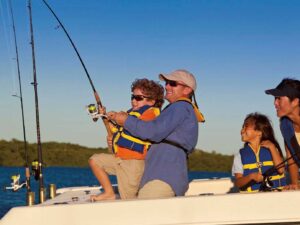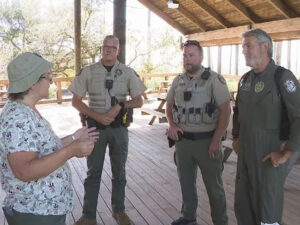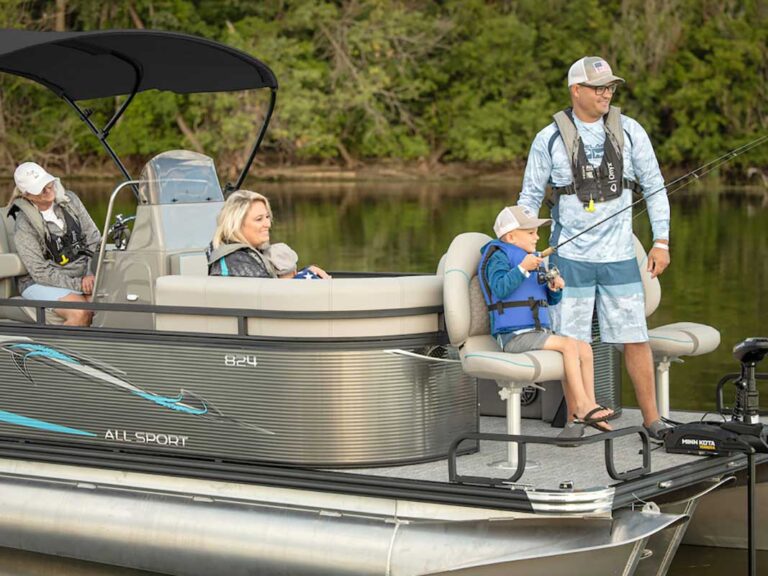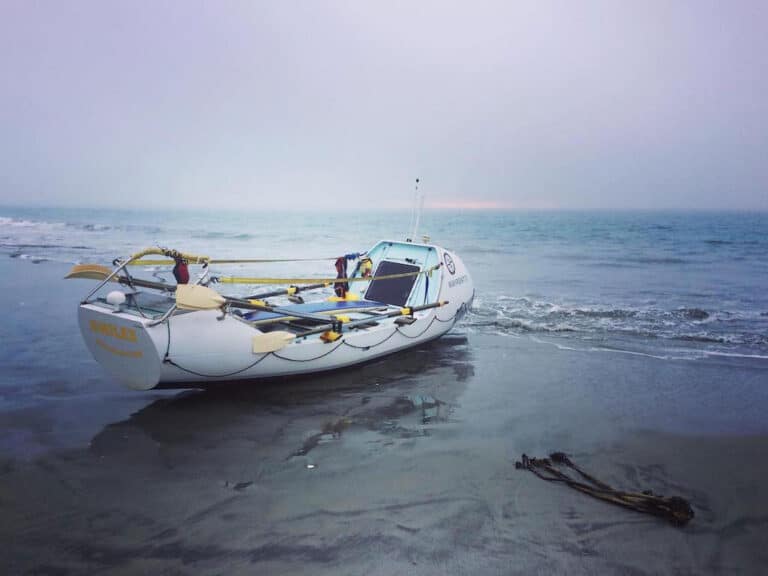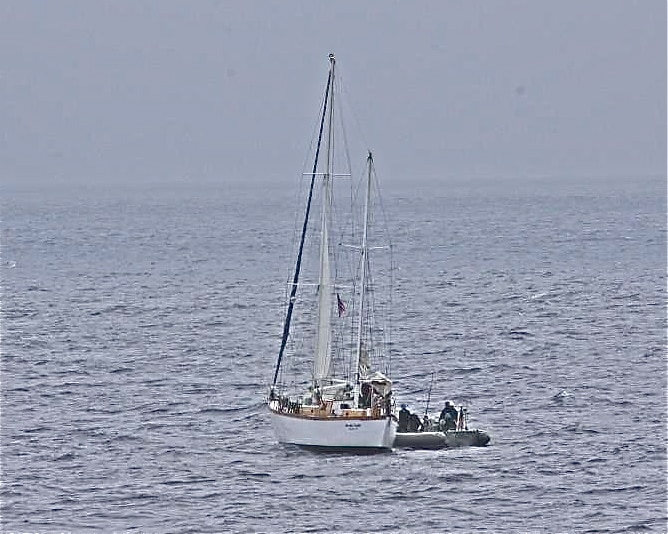
The first rule of boating is that you wear your life jacket. The second is that you keep your boat afloat by keeping the water on the outside. That’s not as easy as it sounds. Rain water from Mother Nature can sink a boat right at its mooring if you fail to button it up and make certain the bilge pump is working before leaving for home. Human error and accidents can also lead to flooding.
Once when boating as a kid I took a 26-foot wooden constructed cabin cruiser out in rough water not knowing that excessive speed would cause the wood screws to fail and pull through the plywood hull. Guess what? I had a flooding problem that required quick thinking to improvise a plug and get back to port.
Improvising temporary plugs and repairs is an important skill for a boater. While operating aluminum jon boats and canoes I have occasionally hit a submerged object and punched a small hole through the hull. I was able to haul the vessel up on shore, dry the hull and make an emergency repair with duct tape.
It pays to be prepared. When putting together your onboard emergency kit, consider what you would need to stop a leak depending on the vessel’s hull material: rubber or wooden plugs, rags, canvas, manila rope, waterproof putty, duct tape, fiberglass tape, etc.. Also, on bigger boats, since bilge pumps aren’t designed to handle large volumes of water caused by a hole in the hull, a dewatering pump is a good investment.
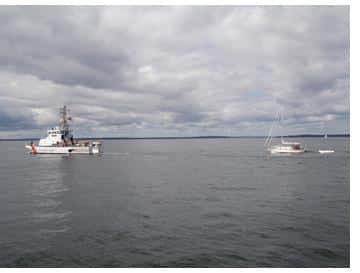
I’ve never lost a boat myself, but I’ve seen many boats sunk due to faulty bilge pumps and human error, and the results can be deadly. Nearly one in eight recreational boating fatalities result from either flooding or swamping, where water washes in over the side of the boat. So keep the water on the outside, but if you can’t, here are some tips for making it safely back to the dock.
Reducing your risk of flooding…
Boating education, vessel maintenance and a thorough knowledge of local conditions can greatly reduce the chance your vessel will flood or become swamped. Here’s what to consider:
• If yours is a trailerable boat, do a regular inspection of the hull, paying attention to seams and rivets. Inspect thru-hull fittings for possible leaks due to faulty gaskets and seals, and make sure that the boat plug is properly seated and secured prior to launch. Be sure the bilge pump is in good working order.
• Take a boating education course and familiarize yourself with the Navigation Rules. This can minimize collisions with other boats and running into fixed objects, like the pier.
• Know the area in which you’ll be operating, including currents, shoals and fixed underwater hazards. Consult area charts and maintain a proper lookout to avoid partially submerged floating objects.
• Always check the weather forecast before heading out. At marinas, small craft advisories, storm warnings, and other alerts warn boaters of higher wind and waves, either imminent or expected within the next 24 hours. For extended outings, track the five-day forecast, either on local AM/FM radio or television, or on Internet weather sites like the National Oceanographic and Atmospheric Administration’s (NOAA) Marine Forecast and information web page at www.weather.gov/om/marine/home.htm.
• Travel at a speed that allows you to maneuver your boat clear of any obstacles. When slowing down, be mindful of your own wake and reduce your speed gradually. Reducing your speed too quickly can cause your own backwash to swamp your boat by washing water in over the transom.
• Make sure that the number of passengers and weight of your gear are within the capacity limits of your boat, bearing in mind that capacity is calculated based on fair weather conditions and an even distribution of the load. Too much weight or weight poorly distributed can cause your boat to become unstable, allowing backwash or small waves to come aboard and reducing the degree your boat can roll before the gunwales dip under the water. Keep the load as low and along the centerline as much as possible. Secure equipment so it doesn’t shift while you’re underway.
…And taking effective action should it happen
If your vessel starts taking on water due to a leak, the amount of time you have to respond depends on the size of the hole and its location below the water line – the lower the hole, the greater the incoming pressure. A one-inch hole in the hull just one foot below the surface floods at a rate of about 20 gallons a minute. That same small hole six feet below the surface floods a nearly two and a half times that rate. You’ll need to think fast and move quickly.
- If possible, locate the source of the leak and try to reduce the flooding. In open boats this is relatively easy to do. Larger vessels, such as cabin cruisers may be more difficult to find leaks due to their construction.
- Activate the motorized bilge pump, if your vessel is so equipped, or have someone man the hand bailer or a manual bilge pump. Make sure everyone on board is wearing their life jacket. In an open boat, distribute persons on board as evenly as possible to prevent capsizing.
- Notify the Coast Guard or your local marine patrol and other boaters in the area that your boat is taking on water. Close watertight doors and hatches, shut down machinery that could make a flooded area hazardous, and close off drains and discharges that can siphon water into the boat if they sink below the water line.
- If you don’t have plugs in your emergency repair kit, use anything that you can put into a hole to slow the flow of water. Small pillows or foam cushions may work to reduce the flooding and give you time to get to safe mooring or until emergency help arrives. Believe it or not a commode plunger works well in some cases. Use your imagination.
- If you’ve managed to get more water going out than coming in, reduce your speed, maintain steerageway and head for shallow water or to safe mooring.
- If you can’t get the flooding under control, you may need to place a Mayday call for help. Activate your EPIRB, if you have one aboard, or use your Visual Distress Signals to indicate that you are in distress and in need of assistance. In some cases you may be instructed to anchor until help arrives.
Simple Mistakes, Serious Complications
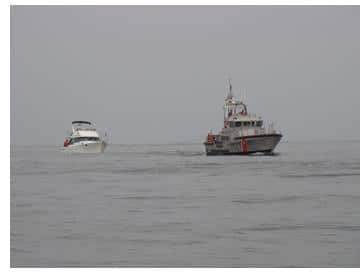
Every year, the U.S Coast Guard sees incidents where simple mistakes put lives in jeopardy.
Take the two retired buddies who set off from a California, marina on a warm day in April, heading for a favorite fishing spot five miles west of the harbor. They had already run into problems that morning. Their usual boat — a 16 ft. aluminum skiff — had to be left behind when the boat trailer developed mechanical problems. Instead, they brought the engine along and put it on a backup boat made of fiberglass over plywood that had been stored for years at the marina.
Trouble struck as they departed the outer harbor. The transom of the boat – weakened by rot – suddenly separated. In less than 30 seconds, the remaining hull filled with seawater and sank – too fast to retrieve the life jackets stowed near the bow.
One man, finding a cooler close at hand, had the presence of mind to dump the contents and use it for flotation. The other tried to swim to a buoy some 40 yards away, but began to founder in the cold water. Luckily, an onlooker ashore dialed 911. A Coast Guard rescue vessel pulled both men aboard.
Failure to carefully examine a stored boat almost cost these friends their lives. For safety’s sake, keep your vessel well maintained and give it a thorough inspection prior to launch.
The U.S. Coast Guard is asking all boat owners and operators to help reduce fatalities, injuries, property damage, and associated healthcare costs related to recreational boating accidents by taking personal responsibility for their own safety and the safety of their passengers. Essential steps include: wearing a life jacket at all times and requiring passengers to do the same; never boating under the influence (BUI); successfully completing a boating safety course; and getting a Vessel Safety Check (VSC) annually from local U.S. Coast Guard Auxiliary, United States Power Squadrons(r), or your state boating agency’s Vessel Examiners. The U.S. Coast Guard reminds all boaters to “Boat Responsibly!” For more tips on boating safety, visit www.uscgboating.org.

